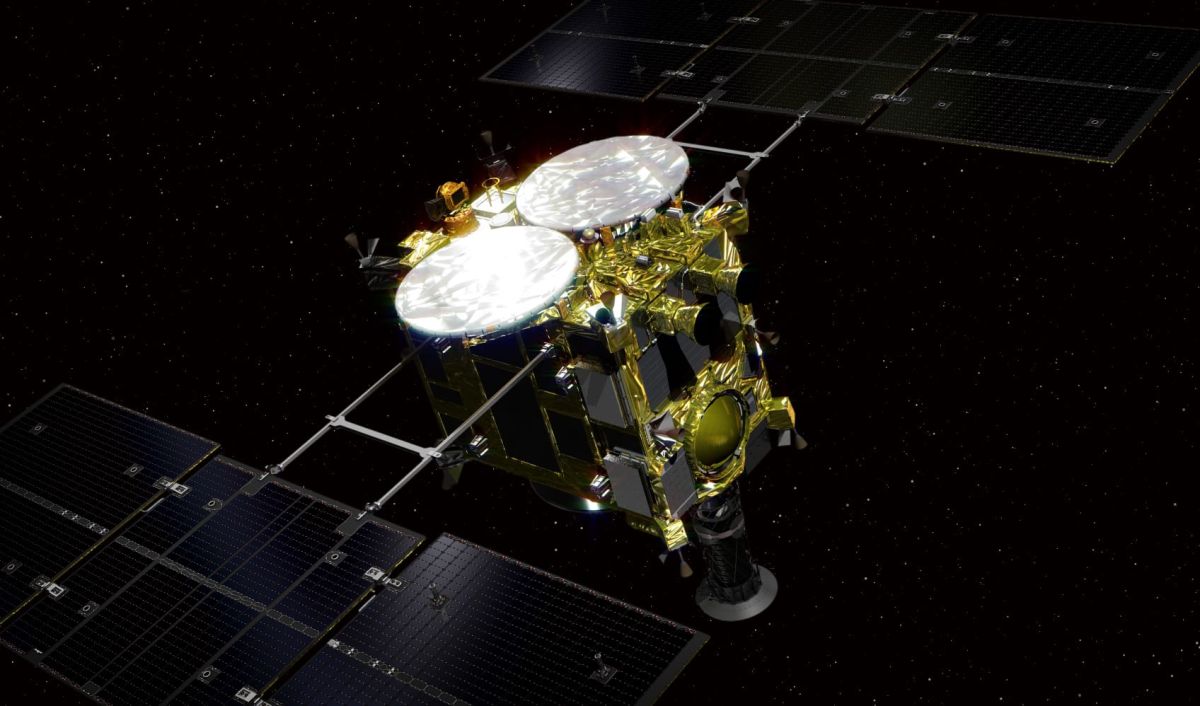Japan touches down on a new frontier
By euanhall

Japan has taken steps towards a future of asteroid mining. On the 22nd of February, the Japan Aerospace Exploration Agency (JAXA) confirmed that its Hayabusa-2 probe had successfully landed on the near-Earth asteroid, 162173 Ryugu, collecting a sample of the asteroid’s surface.
The operation was one of several planned for the Japanese spacecraft. Having launched in December 2014, Hayabusa-2 rendezvoused with Ryugu in June 2018, sending back pictures a few days later from a distance of about 700km, revealing its diamond shape and reversed rotation.
Ryugu was first discovered in 1999. It is about 1km in diameter, orbiting the Sun every 16 months. At times the asteroid can come as close as 95,400km from Earth. While this sounds like a long way, this is only nearly a quarter of the distance to the Moon. Ryugu owes its name to a Japanese folktale, in which a fisherman travels to a magical underwater palace on the back of a turtle. He returns with a mysterious box.
In September, Hayabusa-2 successfully deployed and landed two cylindrical rovers on the asteroid. Most rovers, including the recently deceased Mars Opportunity, trundle around on wheels, whereas these football-sized MINERVA-II rovers hop, bouncing across the surface meters at a time. There were fears that Ryugu’s weak gravity, which is nearly 90,000 times weaker than on Earth, would lose the rovers to space. The hopping-bots were, however, a success, and the French-German Mobile Asteroid Surface Scout (MASCOT) landed 10 days later. The heavier, cube-shaped MASCOT lacked the mobility of MINERVA-II, jumping only once before its batteries ran out after 16 hours. A third MINERVA-II hopping rover is planned for deployment this summer.
Upon descending to the surface of Ryugu, Hayabusa-2 fired a 5-gram ‘bullet’ made of tantalum: a hard, unreactive metal. The bullet displaces particles on the surface, sending them into the air. Hayabusa-2 then collected this dust with its sampling equipment and began its ascent from the asteroid.
Two more sample collecting trips are planned for the spacecraft. Its third will use explosives to blow a crater into the asteroid, ejecting deeper materials from under the surface to be captured and returned to Earth. This sample will contain materials that haven’t been exposed on the surface, unaffected by wind and radiation. JAXA plans to return the samples by December 2020.
This is not the first time a spacecraft has landed on an asteroid. In 2001, NASA’s NEAR Shoemaker landed on Eros, and many will remember ESA’s Philae landing on comet 67P in 2014. JAXA itself landed the first Hayabusa spacecraft on 25143 Itokawa in 2005. However, comets are made of ice, and Eros and Itokawa are both ‘stony’ asteroids. Ryugu is a carbonaceous asteroid. These asteroids have a high carbon content, and Hayabusa-2 marks the first time a spacecraft has landed on such an object.
By visiting a carbonaceous asteroid for the first time, scientists hope to learn more about life’s origin. Ryugu could contain organic material and traces of water from when the Solar System was born. If what we find is similar to chemicals on Earth, perhaps material from space helped give rise to life on our planet. This mission could help answer an important question: where did life on Earth come from?
Beyond this, the mission has not gone unnoticed by fledgeling space mining companies that have begun to sprout up in the last decade. In addition to rare and valuable elements to be returned to Earth, asteroids could be mined for important materials and fuels for missions deeper into space. Planetary Resources Inc, a key player in the space-age gold rush, has already launched two test spacecraft. They hope to design a spacecraft that can use water mined from asteroids as fuel. Planetary Resources has estimated Ryugu’s value for mining purposes to be US$82.76 billion, which is higher than the GDP of nearly two-thirds of the world’s nations.







